Bed bug bites are increasingly common, because there’s been a rapid rise of bed bugs in the US and elsewhere over the last 15 years, impacting people from all economic levels and walks of life.
Here are 5 bed bug bites pictures and a guide to what they look like — because you usually get bitten before you see the bugs. You’ll also find other key info, including how to treat them, how to check for bed bugs, and how to prevent them.
Bed bugs don’t transmit physical diseases, though the histamine in their feces may escalate allergies and asthma attacks. Furthermore, their “gross factor” can cause extreme anxiety and sleeplessness.
They are also notoriously difficult and expensive to get rid of. Therefore, review the following carefully — including how to prevent bed bugs — and SHARE this important info with others.
What Do Bed Bug Bites Look Like
- Bed bug bites look like raised pink or red bumps on your skin.
- They often appear in clusters, rows, or zig-zag patterns of 3 to 5 bites.
- They are most common on areas not covered by clothing at night.
- The bites usually appear from one hour to 3 days after you are bitten.
- Some with delayed immune reactions may show first signs up to 14 days after a bite.
- Some only show milder signs of bed bug bites, such as what looks like a rash.
- Bed bug bites are characterized by intense but sporadic itching.
- The itching usually lasts from one to five days.
- About half of all people show no signs of bed bug bites at all, including no itching.
- You typically can’t feel a bed bug bite while it is happening.
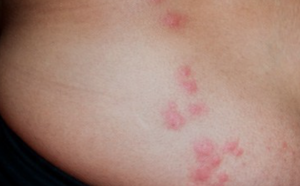
Where Do Bed Bugs Bite
- Bed bugs bite you most often on your face, neck, hands, feet, and any part of your body that is not covered by clothing, especially at night.
- They may bite under or near the hem of shirts or pants, but they do not tend to travel far underneath clothing.
- They will readily travel up to 20 feet from their hiding place to feed on a host.
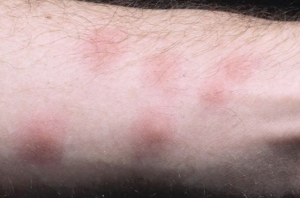
When Do Bed Bugs Bite
- Bed bugs are nocturnal creates who crawl out of their hiding places at night to feed.
- Their most active feeding time is about one hour before sunrise.
- However, if bed bugs are very hungry they’re known to feed during the day, too.
The Top 10 Threats
to Your Life in 2018
Discover the 10 highest-probability dangers to your life, health, and sanity this year, and how to protect yourself.
No fear-mongering. No hype. Just the facts.
The Annual U.S. Report from YouDefense.com. Yours Free Instantly:
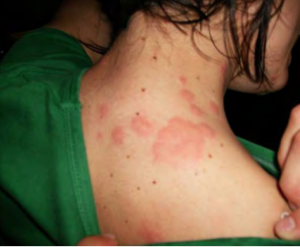
How to Treat Bed Bug Bites
- Keep the infected areas clean by washing with soap and water thoroughly and frequently.
- Try not to scratch the bites, as this only increases the itching and can cause secondary infections.
- The affected areas will usually clear up on their own within a week or two.
- To reduce swelling and itching, wrap ice in a thin towel and apply to the bug bites for about 10 to 15 minutes. Repeat periodically as needed.
- You can also mix 1 teaspoon of baking soda with 3 teaspoons of water and apply it to the bites. Leave it on for 10 minutes, then rinse it off. Repeat this periodically as needed.
- Applying 100% pure aloe vera gel to the bites can also provide relief from the itching and irritation, and it acts as a natural antibiotic and anti-fungal agent.
- You can also saturate a cotton ball with lemon juice, witch hazel, or unfiltered apple cider vinegar and apply it to the affected areas several times a day.
- A medical cream that contains hydrocortisone or cortisone can also be helpful for the inflammation and itching, but it is recommended you find out which to use from a medical professional first.
- An over-the-counter anti-inflammation pain reliever such as ibuprofen (Advil, Motrin) or naproxen (Aleve) can also provide temporary relief from pain and inflammation the bed bug bites may cause.
- If the bed bug bite bumps are severe — or the itching and irritation are severe or you are experiencing pain — definitely do consult a medical professional.
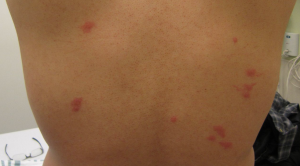
Why Do Bed Bugs Bite
- Bed bugs feed only on blood.
- While they do eat other animals’ blood, they prefer human blood.
- They have six stages of life, and need at least one meal of blood to advance to each stage and ultimately reproduce.
- They will feed more frequently if a meal is available, and can consume up to 6 times their weight in blood.
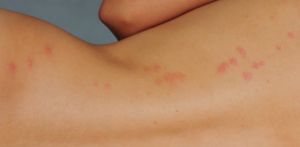
Where Do Bed Bugs Hide
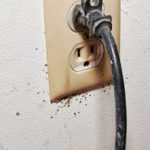
- Bed bugs tend to hide underneath and within the folds of mattresses, box springs, other bedding, and on headboards and bed frames.This is because bed bugs prefer human blood, and people sleep in their beds for hours and so are easy to get to.
- Because bed bugs are about the width of an apple seed and can be as flat and thin as paper, though, they can easily hide in any crack, seam, fold, or crevasse.
- They also often hide underneath and within the folds of couches and chairs, between rugs and carpeting and the walls and floors, behind electrical plates, and within curtains.
- The females lay around 200 eggs in their lifetime, and prefer to lay the eggs in any cracks and crevasses that are undisturbed and close to a source of food (i.e. you), such as in beds, couches, other furniture, and behind electrical plates on walls.
Where Do Bed Bugs Come From
- Bed bugs most often come from anywhere people tend to sit or lay for awhile, because their preferred meal is human blood.
- The 3 most common sources of bed bugs are apartments/condominiums, single-family homes, and hotels/motels.
- Laundromats and shared laundry centers, offices, college dorms, nursing homes, daycare centers, cabins, and hospitals and medical centers are also common sources.
- Bed bugs also can come from business and public waiting areas, movie theaters, restaurants, cars, buses, trains, planes, taxi cabs, boats, and dressing rooms.
- Bed bugs are found virtually everywhere in the US and much of the world.
- And bed bugs are the ultimate hitchhikers.
- Because of their small and very flat size, they can easily hide within the folds of suitcases, purses and bags, the clothing and other items inside the suitcases and bags, and even on the clothing you wear.
- This is how they typically come from other places and end up in your home.
What Do Bed Bugs Look Like
- Grown bed bugs are about the size of an apple seed, 4 to 5 mm long.
- They are brown but get purplish-reddish after feeding.
- They are oval-shaped and very flat, as thin as or thinner than a credit card.
- They do not fly or jump, and walk rather slowly.
- Bed bugs have six different life stages, and grow bigger with each stage.
- They shed their skin at each stage; the shed skin is lighter-colored empty bug shells.
- Their eggs are white, oval, and barely visible to the human eye.
- Newly hatched nymphs are the size of a pin head, and nearly colorless until they feed.
- Bed bugs also leave tiny dark fecal spots of digested blood that look a felt tip marker stain near feeding sites and hiding places.
- Small dried blood stains from engorged bugs being crushed are another tell-tale sign.
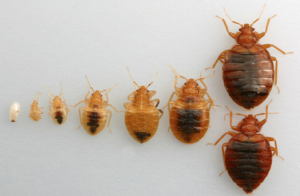
How to Prevent Bed Bugs
- Carefully check the beds and surrounding areas in hotels, motels, cabins, other peoples’ homes, and anywhere you’ll be spending a night or longer right when you arrive. Look for bed bugs and their signs, such as tiny dark fecal spots.
- Thoroughly check you and your family’s clothing, luggage, purses, and other items when leaving other peoples’ homes and cars, and hotels, shared laundry centers, daycare and nursing centers, college dorms, public transportation and other public places.
- Carefully inspect second-hand electronics, furniture, and all other goods inside and out before bringing them into your home, such as those bought at antique shops, yard sales, and consignment shops.
- Inspect gifts from others, especially hand-me-down bedding, clothing, and other fabrics.
- Eliminate as much clutter in your home as possible, especially in sleeping and seating areas, to reduce potential bed bug hiding places.
- Sweep and vacuum your floors frequently. Use a high-suction vacuum cleaner.
- If you or others you live with work in an office, periodically inspect the office area for signs of bed bugs.
- If you have kids in school, contact the school to find out if there have been any reports of bed bugs in classrooms or dorm rooms, and ask to stay informed if any arise.
- if you live in an apartment, condominium, or other multi-family structure, seal off any cracks and crevices around baseboards, light sockets, etc — especially in shared walls — to prevent bed bug movement through the walls.
- If you suspect or know your neighbors have bed bugs, you can buy a high-quality natural product called “diatomaceous earth” that presents a barrier to them (and can also kill them.) DO NOT USE “food grade” or “pool grade”diatomaceous earth in your home as it can be harmful. Use only a pesticide version that is “EPA Registered.” You can spread the diatomaceous earth around the baseboards of the walls of your home and other areas to help prevent bed bug entry.
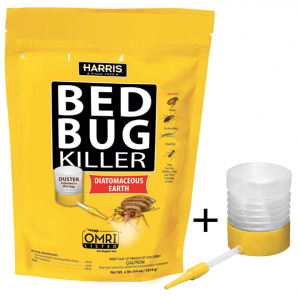
The 10 Highest-Probability Dangers You (Actually) Face
Fear-mongering is rampant. Most is untrue. We scoured the data. These are the 10 dangers to life and quality of life Americans need to beware of most.
No scare tactics or hype. Just the crucial facts.
The Annual U.S. Report from YouDefense.com. Yours Free Right Now:
How to Check for Bed Bugs
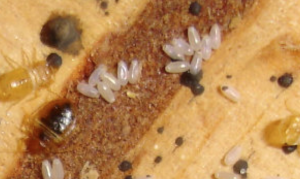
- Look for living bed bugs.
- Check for rusty or reddish stains on fabrics which suggest crushed and dead bed bugs.
- Look for dark spots on fabrics resembling felt tip marker stains about the size of this dot –> • which could be bed bug feces.
- Check for the shed skins of bed bugs, as they molt 5 times before reaching maturity.
- Look for their tiny white oval eggs and egg shells.
- A higher level of infestation can also result in an offense, musty smell.
- Periodically and carefully check mattresses and boxsprings in your home, including under them and within their seams and folds, as well as the headboard and bed frame.
- Periodically check for bed bug signs in the folds and crevasses of couches, in the area near your couches, and in and near all other seating or laying areas in your home.
- Periodically check for bed bug signs in the cracks and crevasses of other furniture, in curtains, behind pictures, under rugs, where carpet meets the wall, behind electrical wall plates, and other likely hiding places — especially in areas you sit or lay in.
- If you have pets, check their resting areas too, and check them periodically for bed bug bites. Bed bugs prefer humans, but will bite dogs, cats, and other animals too.
- Also routinely check inside your vehicles, including around and under the seats.
How to Get Rid of Bed Bugs
Bed bugs are notoriously difficult to get rid of on your own. If you catch their infestation at the earliest stages in your home, you stand a slight chance to beat them on your own.
However, the unfortunate fact is that even if it seems like you beat them, very often at least some survivors are left lurking somewhere, such as deep inside your walls. If just one survivor is a pregnant female, she can lay hundreds of eggs that can quickly multiply into thousands another bed bug infestation.
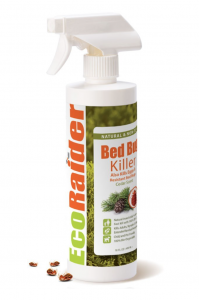
You may not see the signs of this re-infestation for weeks or even months — until they find their way back to you in your bed and you notice the bed bug bites again, for example.
If you try to destroy them on your own, therefore, you need to be very thorough and stay vigilant in your extermination efforts long after it seems like the problem is gone. Bed bugs can live deep in cracks and crevasses up to 400 days without feeding.
It is therefore very highly recommended that you contact a professional exterminator experienced in bed bug eradication to get rid of them.
If you are still going to try to get rid of bed bugs on your own, you need to use a combination of non-chemical tactics along with insecticides. Note that MOST chemical insecticides you can buy do not work well. The following steps are key:
- A Rutgers University study found that the two most effective low-toxicity insecticides of 11 tested that you can buy to help get rid of bed bugs are #1) “Bed Bug Killer by EcoRaider” and #2) Bed Bug Patrol. Follow the product instructions closely.
- In addition, you can use a diatomaceous earth powder designed specifically as a pesticide, such as “Harris Bed Bug Killer,” which kills and repels bed bugs in a different manner than the insecticides noted above. Follow the product instructions closely.
- Be sure to wash all your bedding, linens, curtains, clothing, and other fabrics in hot water at or above 120 degrees Fahrenheit.
- Place all fabric items that can’t be washed, like certain types of shoes and stuffed animals, on the highest heat level in a dryer for at least 30 minutes.
- Use a stiff brush to scream the seams and crevasses in mattresses, couches, and other furniture vigorously.
- Vacuum every nook, cranny, crack and corner of your home thoroughly. This especially includes your mattresses, atop and inside your boxsprings, your couch, and surrounding areas. Also remove all electrical and light-switch plates and vacuum behind them.
- Dispose of the collected debris in the vacuum in a garbage immediately; put it inside a tightly sealed plastic bag and place in a garbage can outside.
- Only use a vacuum top-rated for high suction, such as the Dyson Ball Multi Floor 2.
- Once vacuumed, wrap all mattresses, boxsprings, and pillows in top-quality, bed-bug-proof proof encasements. SafeGuard brand mattress encasements, Safeguard brand boxspring encasements, and Safeguard brand pillow encasements are top-recommended. Keep these encasements on for at least a year to ensure any bags inside the mattress and boxspring are dead.
- If existing mattresses, boxsprings, and pillows are too infested (or the thought of keeping them is just gross), dispose of them and buy new ones. Immediately wrap them in new encasements and keep the encasements on for at least a year.
- Bed bugs die if exposed to heat of 118°F or more, but it can take 20 minutes or more to ensure you’ve killed them this way. As such, you can also use a powerful handheld steamer — especially in hard-to-reach places — in addition to the other tactics, such as this Lemontec High-Capacity Steamer. Apply the steam to the area for at least 20 minutes. Do not apply steam to live electrical outlets or wires, or electronics like computers.
As you can see, it’s a complex and very involved process you should do repeatedly to try to get rid of bed bugs on your own. And again, even if you miss one pregnant female lurking within some wall or crevasse somewhere, the problem can repeat all over again.
So it’s top recommended to contact a professional exterminator to get rid of bedbugs in your home.
What Should You Really
Worry About This Year?
There’s a lot you actually should not worry about. After researching the data, here are the top 10 real threats to your life and quality of life every American should beware of.
No fear-mongering. No hype. Just the facts.
The Annual U.S. Report from YouDefense.com. Yours Free Right Now:
Sources:
US Department of Defense, Armed Forces Pest Management Board
American Academy of Dermatology
Consumer Reports
Environmental Protection Agency
Michigan Department of Community Health
OMICS International
PestWorld.org
Plos One
Texas A&M Agrilife Extension
University of California, Agriculture and Natural Resources
Virginia Department of Agriculture and Consumer Services
Please SHARE ↓ this important info on what bed bug bites look like and how to check for bed bugs with others, because it can help them avoid this high-anxiety nuisance!
And let us know below your thoughts on this post and your ideas on how to prevent and how to get rid of bed bugs.




